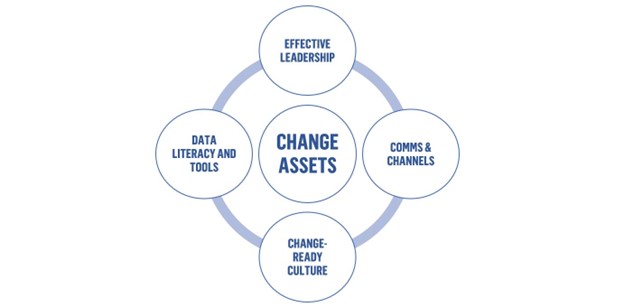Victoria proudly carries the moniker of the Education State, a tagline that been reflected investment and reforms within the Education portfolio. But large scale reforms are not easy.
A recent conversation with a contact in the department prompted me to reflect on what I saw as an disconnect at times between the “change assets” within the education eco-system, and the planning and execution of specific programs and reforms.
Change assets are defined to be the capabilities within a system that can be leveraged to support large-scale reforms. These are:
- leadership engagement and effectiveness, to create the impetus for change and drive it through the system.
- data visibility coupled with data literacy, to ensure evidence-driven design and insight to guide implementation
- communications capability supported by effective channels, to get the right messages to the right people at the right time
- a culture receptive to innovation and change, to elevate intrinsic motivation at school, area and regional level to invest in making things work.

Over the years, Urbis has been involved in reviewing a great diversity of programs and reforms in the education space and the common threads around what’s gone well or not always includes some variation on the four change assets. These assets are universal factors – there are others of course, including the quality of the specific program/reform design, the adequacy of support funding, or access to the right workforce.
There’s value in investing in growing these capabilities within the Education system as universal enablers of more effective and efficient reform. There are certainly examples of this already – I think leadership initiatives like the principals’ communities of practice, or system-wide data literacy initiatives (both evaluated by Urbis as it happens).
However, the extent to which these change assets are built as platforms for reform, and the extent to which reform implementers in DET routinely leverage them directly is less clear. Perhaps it’s time for an integrated reform playbook which guides implementers on the change assets at their disposal, and how they can be deployed?
